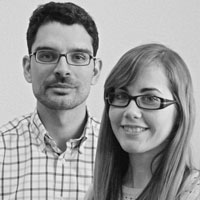There are two ways of carrying out a task with a group of people. Doing the work in a group and doing it as part of a team. The difference between the two is that teamwork generates synergy. When a team is involved in a project and there is unity among its members, the knowledge shared and the experience gained by each team member is transferred to the rest.
This system is applied over the entire life cycle of a project and allows for the continuous feedback of knowledge.
If we are dealing with a project for which the tools to be used, the way of acting and the goals to be reached have been set, the team’s work involves finding the right path which is, in many cases, done through trial and error. In order to ensure such an activity is done in the best possible way, there have to be a willingness to transfer knowledge (not only information), an interest in the way the tools work and a critical approach. Synergy is created when these factors coalesce.
When this is transferred to a departmental or business environment, we are dealing with Concurrent Engineering. In this case, an information network is created and knowledge is placed at the disposal of the teams by means of IT systems and PDM (Product Data Management) tools to carry out the joint project in parallel. When this kind of joint activity involving multidisciplinary teams generates synergy, it is called Collaborative Engineering.
Collaborative Engineering is based on improving the organisation of projects, teamwork and taking advantage of new information technologies. It attempts to involve all departments and human teams that take part in the life cycle of the project to be carried out by providing an environment that gives visibility to operations on a continuous basis. PLM (Product Life Cycle Management) systems provide remote, updated and selective access to different kinds of stored information (through permits, profiles, etc.) in an effort to ensure that the large amount of stored data does not cause a saturation effect. A wide range of tools that facilitate the implementation of collaborative environments is available today.
The following results can be obtained through the proper implementation of this methodology:
- Information flow within the work group is facilitated
- The time spent on working with obsolete data is eliminated by improving version management and product changes during production cycles
- An active notification system is provided, which keeps team members informed
- Geographically disperse work teams are allowed to work
- The information each work team is able to access can be differentiated
- Development time scales are shortened by overlapping each department’s production processes
This system is applied over the entire life cycle of a project and allows for the continuous feedback of knowledge.
The implementation of collaborative engineering is currently being developed in the A320neo aircraft’s fan cowl manufacturing process as part of the CalipsoNeo project. The main task is focused on getting the most out of the PLM platform which uses Delmia DPM-DPE (Digital Process for Manufacturing – Delmia Process Engineering) software until it works in accordance with the project’s target. Simulations are being carried out through the iDMU (industrial Digital Mock-Up) to detect any possible assembly interferences and problems at the same time the product, the resources and the manufacturing processes are being designed. All of this is being done simultaneously on the same environment, constituting a perfect example of the collaborative process.



